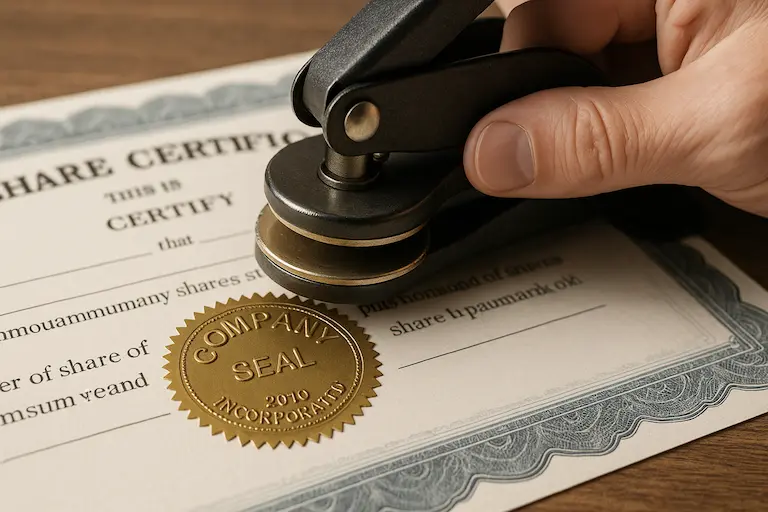Common Seal
A common seal is an official stamp or embossed device used by a company to authenticate important legal documents and contracts.

A common seal is an official stamp or embossed device used by a company to authenticate important legal documents and contracts.

A common seal serves as a company's official signature for executing formal documents.
It typically contains the company's name and registration number, creating a raised impression on paper that proves the document's authenticity.

The common seal works by creating a physical impression on documents through embossing or stamping.
Two company officers usually witness the sealing process and sign alongside the seal to confirm its proper use.
Companies must use their common seal when their articles of association require it for specific documents.
This typically includes share certificates, property transfers, and high-value contracts, though requirements vary by company constitution.
Only authorised company officers can use the common seal, typically directors or the company secretary.
The company's articles of association specify exactly who has this authority and under what circumstances.
Incorrect use of a common seal can invalidate documents or create legal disputes about document authenticity.
Companies should maintain proper records of when and how their common seal is used to avoid complications.
Most modern companies aren't legally required to have a common seal, as electronic signatures and standard document execution methods are widely accepted.
However, some traditional documents and older company constitutions may still require sealing.
Companies should store their common seal securely, typically in a locked safe or cabinet with restricted access.
Proper storage prevents unauthorised use and ensures the seal remains in good condition for official document execution.